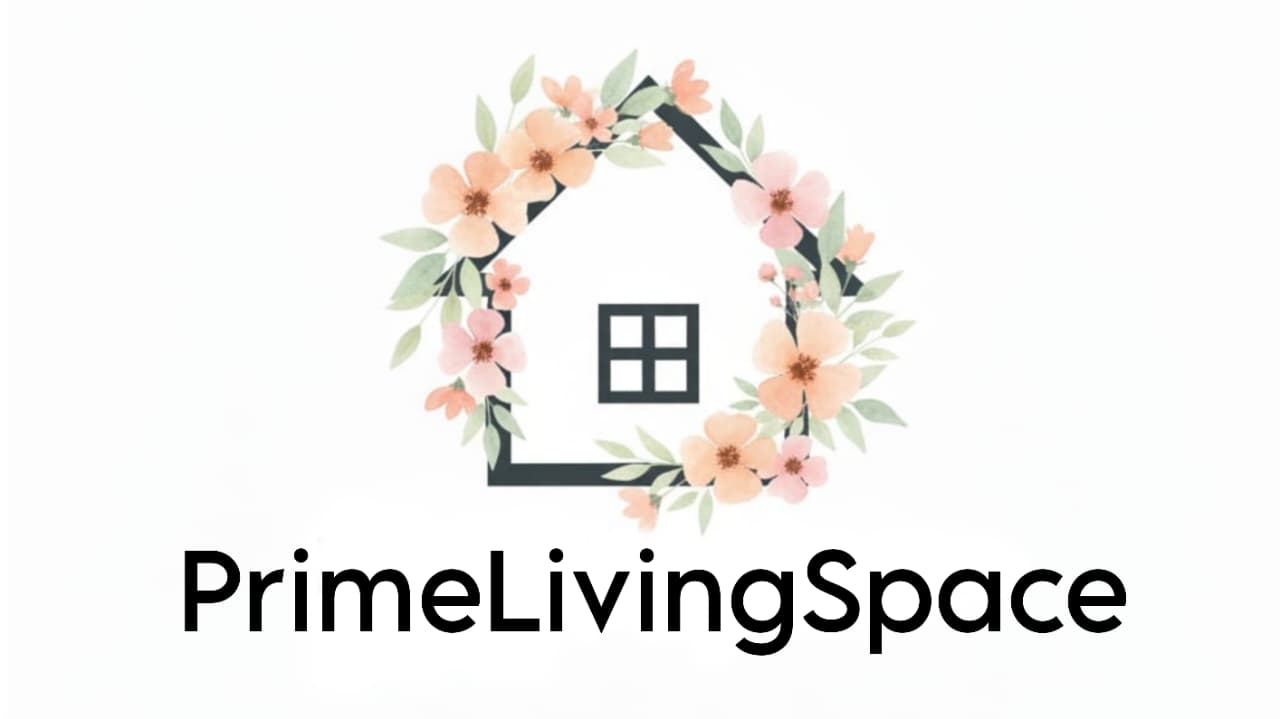
When you think of a cattle fence, the first thing that comes to mind is usually practicality: strong posts, barbed wire, and keeping your livestock where they belong. But here’s the secret: your cattle fencing doesn’t have to look dull or purely functional. With a little creativity, it can actually become one of the most beautiful parts of your property.
A well-built DIY cattle fence not only keeps your cows safe but also defines your farm’s personality. From rustic wooden rails to sleek metal panels, you can design a cattle fence that’s affordable, durable, and stylish without hiring a contractor. These 10 DIY cattle fence ideas will inspire you to build something that’s both tough and eye-catching.
- 1. Rustic Wooden Rail Fence—Classic and Timeless
- 2. Reclaimed Pallet Fence—Budget-Friendly and Eco-Smart
- 3. Wire and Wood Combo Fence—Modern Meets Practical
- 4. Split Rail Fence with Wire Backing—Country Vibes with Safety
- 5. Painted Wooden Fence—Add a Touch of Personality
- 6. Barbed Wire Fence with Wooden Posts—Simple and Reliable
- 7. Electric Cattle Fence—Invisible Power and Control
- 8. Stone Base Fence—Old-World Strength and Beauty
- 9. Modern Metal Panel Fence—Sleek and Built to Last
- 10. Living Fence—Nature’s Own Boundary
- FAQs About Cattle Fence Ideas
- Final Thoughts: Build a Fence That Works and Wows
1. Rustic Wooden Rail Fence—Classic and Timeless

Nothing says “farm charm” like a rustic wooden cattle fence. It’s simple to build, blends naturally into the landscape, and stands strong through every season. Use treated lumber or reclaimed barn wood for an authentic farmhouse feel.
Why it works: Wooden rails give that old-fashioned pasture vibe while staying practical. You can stain or paint the fence for protection and style perfect for both small ranches and large fields.
Pro Tip: Pair your wooden cattle fencing with wire backing for extra durability without ruining the rustic aesthetic.
2. Reclaimed Pallet Fence—Budget-Friendly and Eco-Smart

If you’re looking for a DIY cattle fence that’s easy on the wallet, reclaimed pallets are your best friend. They’re sturdy, eco-friendly, and give your farm a handcrafted, down-to-earth vibe.
Why it works: Pallets are affordable and easy to assemble. You can customize the height and spacing depending on your cattle size and pasture layout.
Bonus: It’s a great weekend project that saves money and recycles old materials.
3. Wire and Wood Combo Fence—Modern Meets Practical
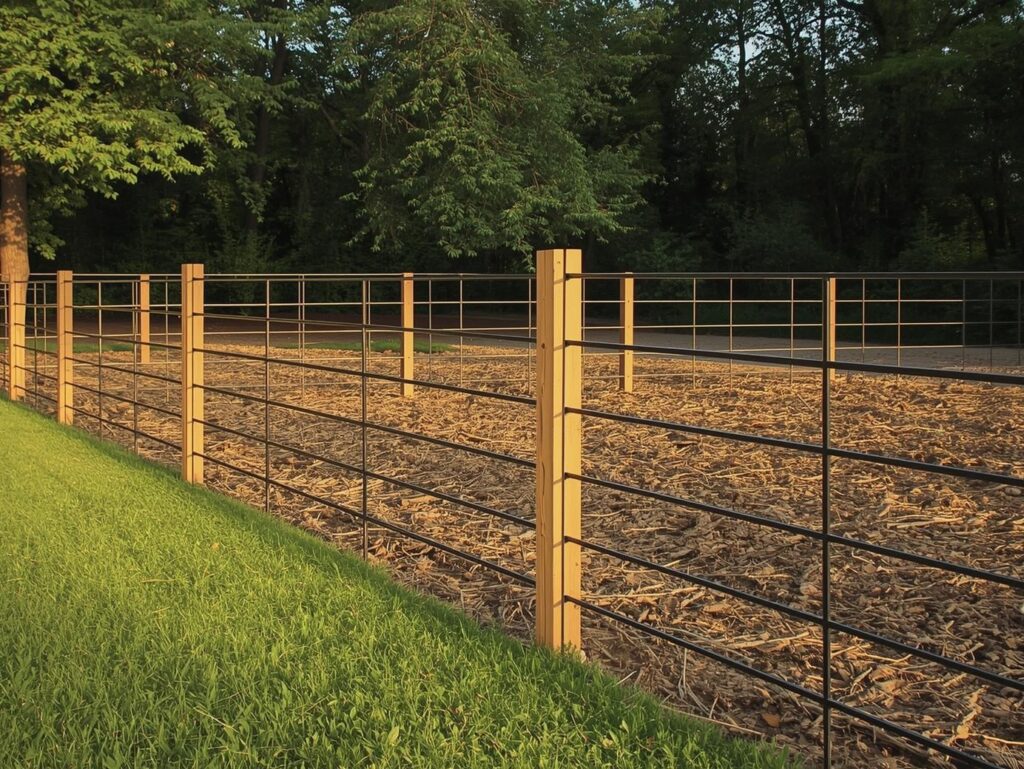
Combine wood posts with galvanized cattle wire to create a sleek and functional farm fence. This design offers both strength and visibility perfect for open pastures.
Why it works: The wire keeps your cattle safely contained, while the wood frame adds warmth and character. It’s a great balance between modern ranch fencing and rustic charm.
Pro Tip: Use weather-treated posts and tensioned wire for longer life and less maintenance.
4. Split Rail Fence with Wire Backing—Country Vibes with Safety
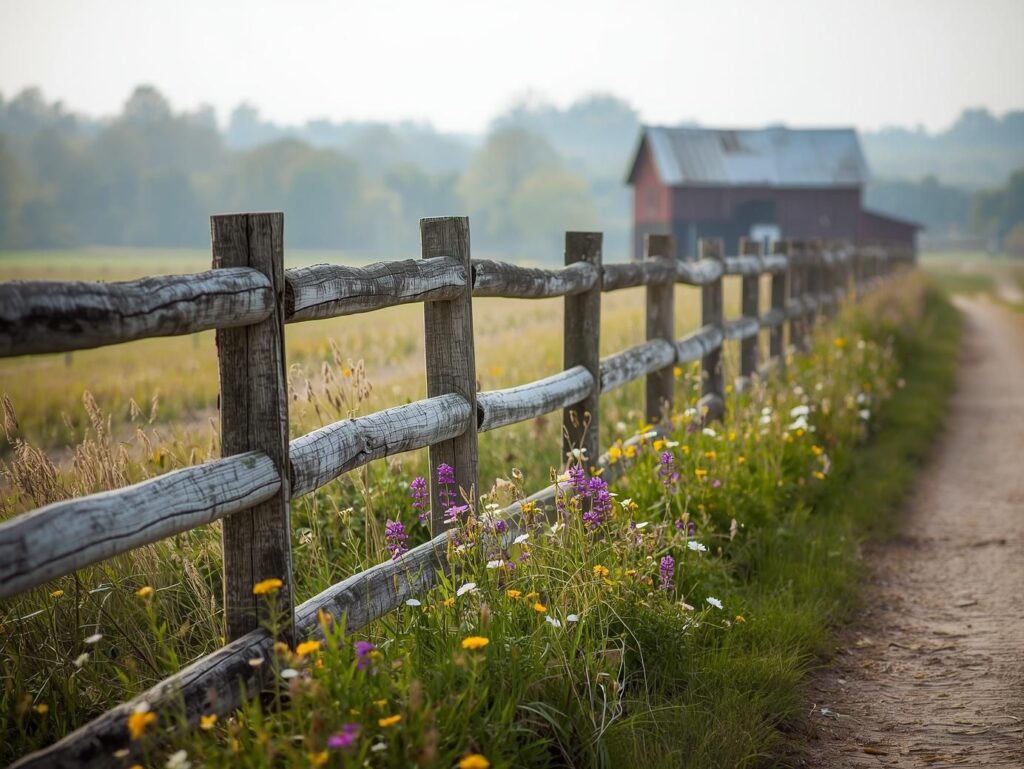
If you love that wide-open, country feel, the split rail cattle fence is your go-to. It’s open, airy, and full of charm. But here’s the smart twist: add welded or woven wire backing to prevent calves from slipping through.
Why it works: You get the classic look without compromising security. This combo is popular among ranchers who value both form and function.
5. Painted Wooden Fence—Add a Touch of Personality
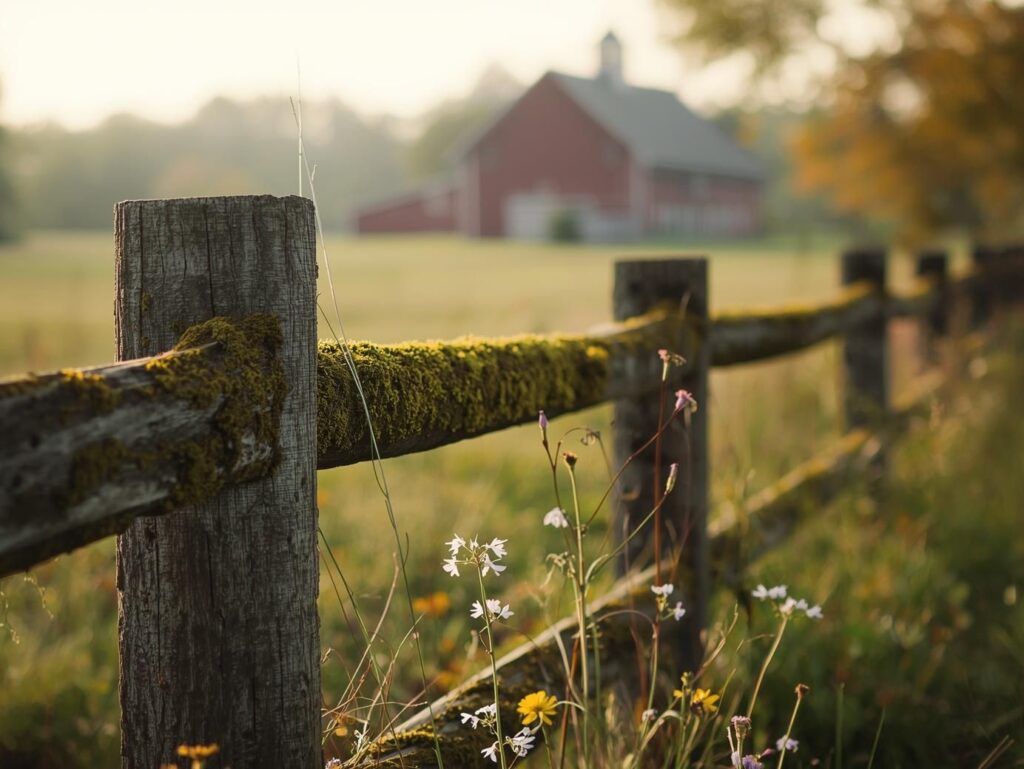
Who says fences have to stay plain? A splash of color can turn your cattle fence into a statement piece. Go with classic white, farmhouse gray, or deep earthy tones that complement your landscape.
Why it works: Paint not only adds personality but also protects wood from sun and moisture damage. It’s beauty and function rolled into one.
Pro Tip: Use weatherproof, livestock-safe paint for lasting results.
6. Barbed Wire Fence with Wooden Posts—Simple and Reliable
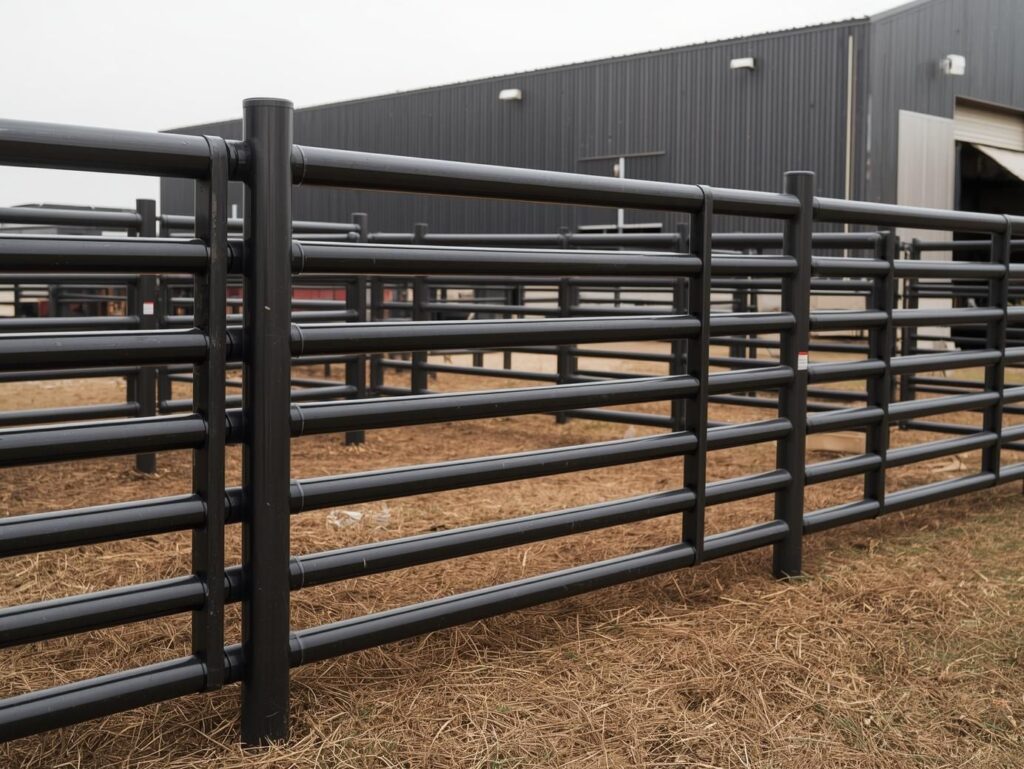
The barbed wire cattle fence is the old-school standard for a reason it works. It’s affordable, easy to install, and keeps cattle right where they need to be.
Why it works: When paired with sturdy wooden posts, barbed wire offers maximum security with minimal visual clutter. It’s the ultimate blend of strength and simplicity.
Pro Tip: Use tensioners and corner bracing for clean, straight lines that look neat and professional.
7. Electric Cattle Fence—Invisible Power and Control

For those managing larger properties, an electric cattle fence is a lifesaver. It’s subtle, effective, and surprisingly affordable to maintain.
Why it works: It keeps your livestock contained with minimal visual disruption, letting your land shine through. Today’s solar-powered electric fencing makes it even more sustainable and low-maintenance.
8. Stone Base Fence—Old-World Strength and Beauty
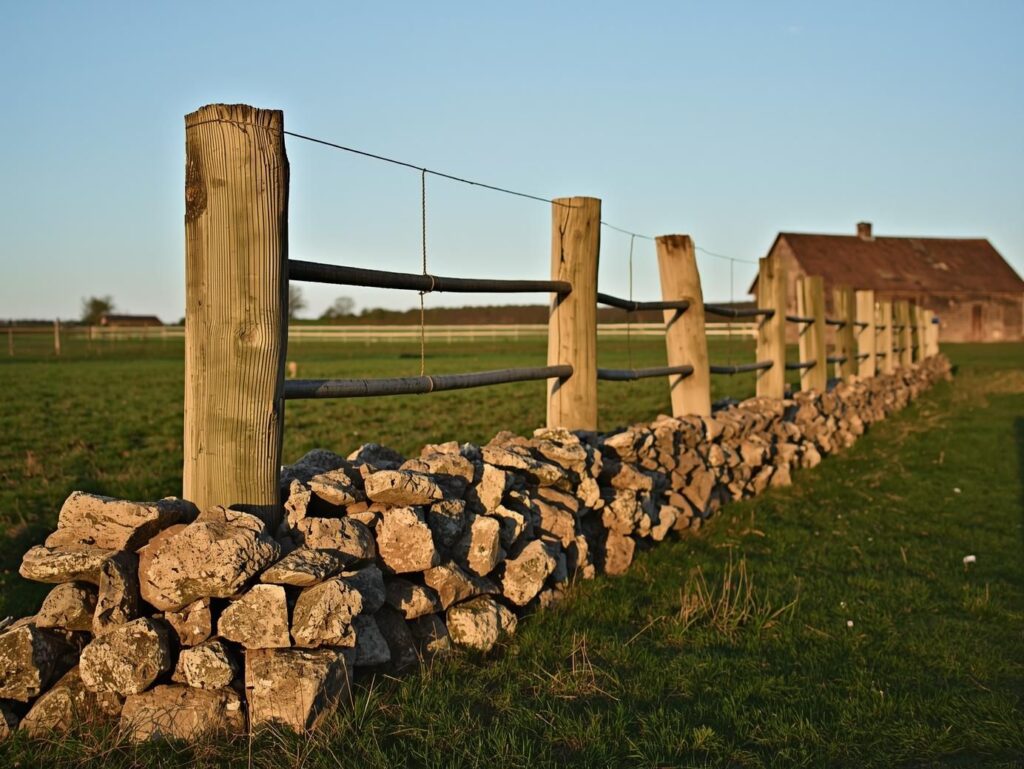
If you want your cattle fence to double as a statement piece, build one with a stone foundation. Stack natural stones along the base and anchor your fence posts within it for an elegant, estate-like appearance.
Why it works: It combines timeless beauty with rock-solid durability. Great for windy or uneven terrain, and it instantly elevates the look of your entire property.
9. Modern Metal Panel Fence—Sleek and Built to Last

A modern ranch deserves a modern cattle fence. Think clean lines, steel panels, and a minimal aesthetic. Powder-coated metal panels resist rust and stand up to weather beautifully.
Why it works: It’s virtually maintenance-free and looks sharp against both green pastures and modern barns. Plus, metal fencing can be recycled, good for your cows and the planet.
10. Living Fence—Nature’s Own Boundary
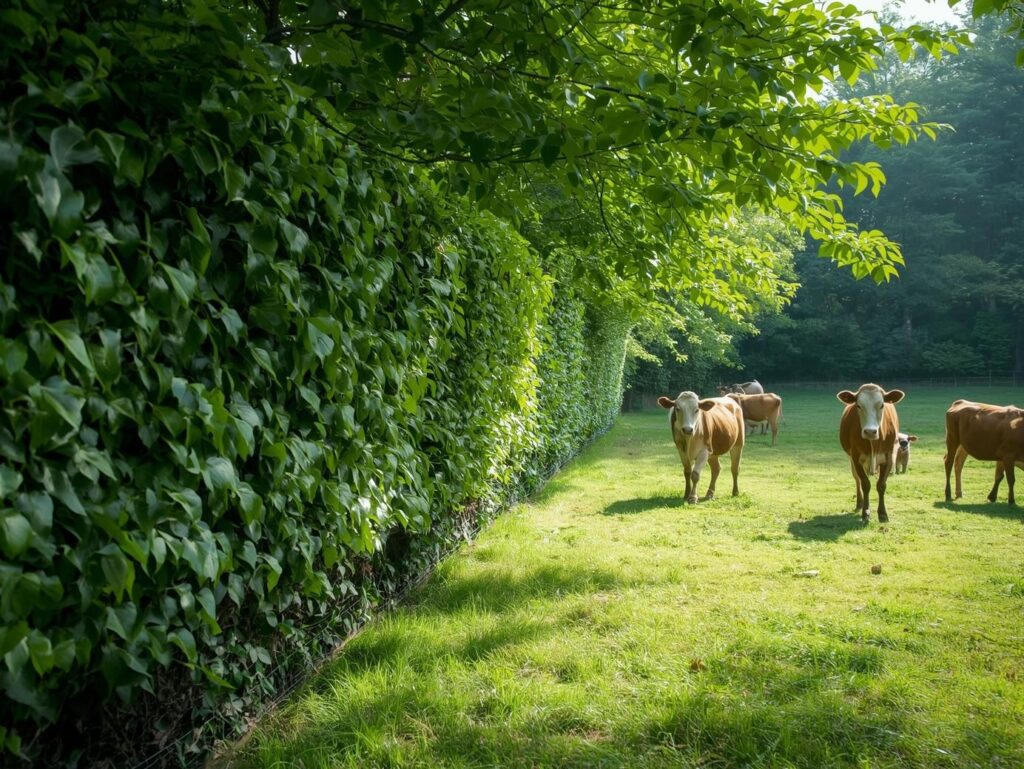
Want something green, natural, and gorgeous? Create a living cattle fence using thick shrubs or hedges supported by wire or rail structures. It’s environmentally friendly and adds privacy and shade.
Why it works: A living fence evolves with time becoming denser and more beautiful every year. It’s also great for wind protection and biodiversity on your farm.
FAQs About Cattle Fence Ideas
1. What is the best type of cattle fence for small farms?
For small farms, a wood and wire cattle fence is ideal. It’s affordable, durable, and easy to install without heavy machinery. You get a secure barrier that looks rustic and fits well with smaller properties.
2. How tall should a cattle fence be?
Most cattle fences should stand between 4.5 and 5 feet tall. This height keeps cattle safely contained while still allowing you easy visibility across your pasture. Taller fences might be needed for larger or more active breeds.
3. Can I build a cattle fence myself?
Absolutely! Many DIY cattle fence projects are simple enough for beginners. With basic tools, pressure-treated wood, and quality wire or panels, you can build a strong, long-lasting fence over a weekend.
4. What’s the cheapest way to build a cattle fence?
Using reclaimed pallets, barbed wire, or tensioned electric fencing can help you save big. These materials are budget-friendly and still do an excellent job of containing livestock when installed correctly.
5. How long does a cattle fence last?
The lifespan of a cattle fence depends on your materials and maintenance. Wooden fences can last 10–15 years with sealing or staining, while metal and electric fences can easily last 20+ years if kept in good condition.
Final Thoughts: Build a Fence That Works and Wows
Your cattle fence doesn’t have to be just a boundary, it can be a feature that defines your farm’s character. Whether you go rustic with wood, modern with metal, or sustainable with natural materials, there’s a DIY cattle fencing idea that fits your land and budget perfectly.
Remember: a well-built cattle fence does more than protect your livestock; it reflects the care, creativity, and pride you put into your farm.
